Name Friedrich Guggenberger | ||
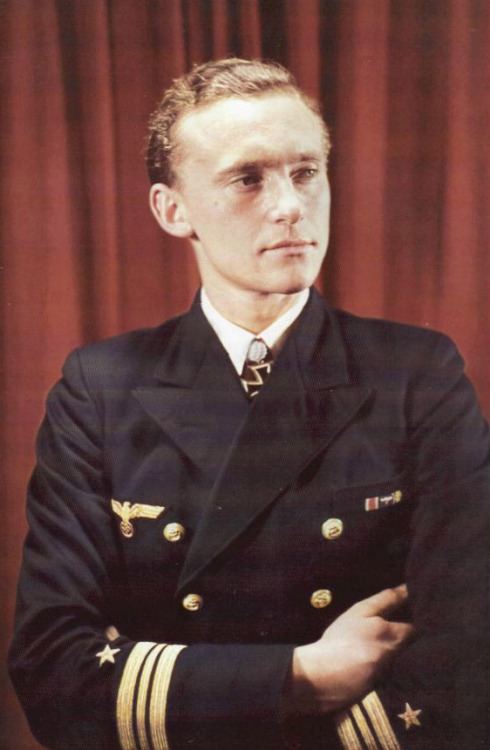 | ||
Born 6 March 1915Munich ( 1915-03-06 ) Years of service 1934–43 (Kriegsmarine)1956–72 (Bundesmarine) Battles/wars World War IIBattle of the AtlanticGreat Papago Escape Unit 24th U-boat Flotilla, 1st U-boat Flotilla, 29th U-boat Flotilla, 4th U-boat Flotilla, 10th U-boat Flotilla | ||
Friedrich Guggenberger
Friedrich Guggenberger (6 March 1915 – 13 May 1988) was a German admiral and U-boat commander in the Second World War. From November 1940 until his capture in July 1943, he was credited in Nazi propaganda with sinking 17 ships for a total of 66,848 gross register tons (GRT) and damaging another for 6,003 GRT. He was responsible for sinking the British aircraft carrier HMS Ark Royal in November 1941. For these achievements he received the Knight's Cross of the Iron Cross with Oak Leaves, among other commendations. After the war he became the Deputy Chief of Staff in the NATO command AFNORTH.
Contents
- Friedrich Guggenberger
- Early life
- U 81
- U 513 and capture
- Escapes
- Postwar and personal life
- Awards
- References
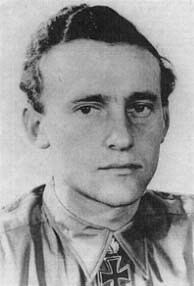
Early life
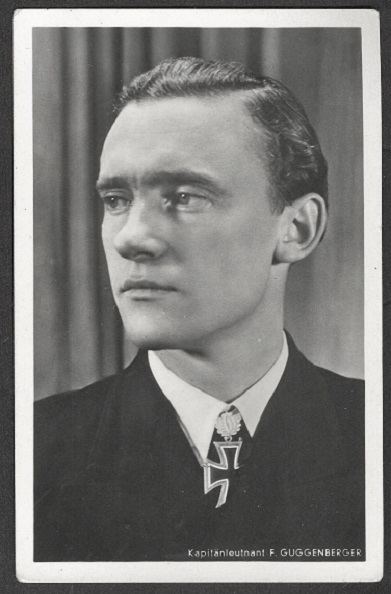
Guggenberger was born in Munich on 6 March 1915. He had entered the navy by 1934, transferring to the U-boat arm in October 1939, shortly after the outbreak of the Second World War. After the usual training pattern he was assigned to U-28, where he served under the command of Knight's Cross holder Günther Kuhnke. Guggenberger then briefly took over from Kuhnke and commanded U-28 for a few months whilst she was part of a school flotilla. He was awarded the Iron Cross 2nd Class on 23 March 1940.
U-81
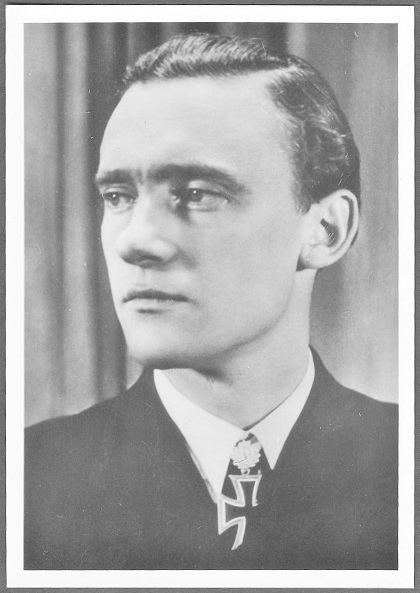
Guggenberger then received command of U-81, commissioning her on 26 April 1941. He carried out three patrols in the Atlantic, encountering moderate success and sinking two ships. He was awarded the U-boat War Badge 1939 on 8 July and promoted to Kapitänleutnant on 1 September. He was then ordered to take U-81 into the Mediterranean to join 29th U-boat Flotilla. His first attempt failed when, attempting to force the Straits of Gibraltar, U-81 was spotted by RAF planes and attacked, causing heavy damage. U-81 retreated to Brest where she was repaired, and Guggenberger was awarded the Iron Cross 1st Class on 9 September. U-81 sailed again to attempt to enter the Mediterranean in November 1941. Whilst transiting the Straits on 13 November, he met the ships of Force H, returning to Gibraltar. He was able to attack the aircraft carrier HMS Ark Royal, hitting her amidships with a single torpedo. He then escaped the depth charge attacks of the escorting destroyers. Despite attempts to salvage Ark Royal had to be abandoned, and she sank the next day. Guggenberger was awarded the Knight's Cross on 10 December.
U-513 and capture
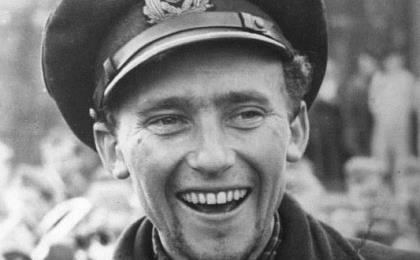
Guggenberger went on to have a number of successful patrols in the Mediterranean, and left U-81 on 24 December 1942, being replaced by Johann-Otto Krieg. Guggenberger was awarded the Oak Leaves to his Knight's Cross on 8 January and oversaw the commissioning of U-847, but did not take her on any war patrols. The presentation was made on 31 January 1943 at the Wolf's Lair, Hitler's headquarters in Rastenburg, present-day Kętrzyn in Poland, for the Oak Leaves presentation. Following the presentation, Hitler met with Dönitz and Vizeadmiral Theodor Krancke in private. In this meeting, Hitler appointed Dönitz as Oberbefehlshaber der Marine (Commander-in-Chief) of the Kriegsmarine following Raeder's resignation on 30 January 1943. On the return flight to Berlin, Dönitz informed Guggenberger and the other officers present of this change in command.
He then joined Admiral Karl Dönitz's staff for three months. He returned to sea in May 1943 in command of U-513. He only undertook one patrol aboard her though. After sinking four ships and damaging a fifth she was sunk on 19 July 1943 by depth charges from an American PBM Mariner whilst off the coast of Brazil. Guggenberger was one of only seven survivors. Badly wounded he and the others spent a day aboard a life raft before being picked up by an American ship, USS Barnegat. Guggenberger was operated on and then hospitalised for a period, before being transferred to Fort Hunt on 25 September 1943, followed by the Prisoner of war camp at Crossville later that month. By late January 1944 Guggenberger had been moved to the Papago Park camp near Phoenix, Arizona.
Escapes
Guggenberger met with four other U-boat commanders and on 12 February 1944 they escaped from the camp. Guggenberger travelled with August Maus, but they were recaptured in Tucson, Arizona. Guggenberger was part of a larger breakout of 25 POWs on the night of 23–24 December 1944. This time he travelled with Jürgen Quaet-Faslem and managed to make it to within 10 miles of the Mexican border before they were recaptured on 6 January 1945. After these escapades, Guggenberger was transferred to Camp Shanks, New York in February, 1946, and was then repatriated to Germany. He was held in a compound in the British zone, near Münster, before being released in August 1946.
Postwar and personal life
On 16 November 1940 Guggenberger married Lieselotte Fischer. The marriage produced four children. Guggenberger became an architect, before rejoining the navy, by now the Bundesmarine in 1956. He studied at the Naval War College in Newport, Rhode Island, and rose to the rank of Konteradmiral. He became the Deputy Chief of Staff in the NATO command AFNORTH, and served there for four years. He retired in October 1972. He left his home on 13 May 1988 for a stroll in the forest, but never returned. His body was found two years later.
